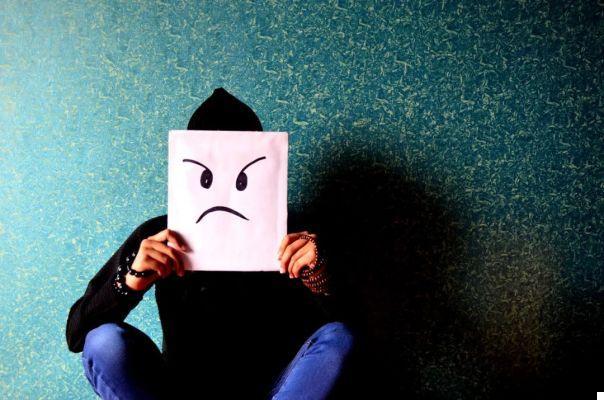
Sadness and Anger came to a wonderful pool of crystal clear water. They both decided to take a bath, undressed and jumped into the pond.
Anger, always in a hurry, as always, without knowing very well why, he quickly got wet and faster and faster he got out of the water. However, since anger is blind, or does not clearly distinguish reality, naked and hasty, he dressed himself in the first clothes he found ...
They weren't his own, but those of sadness… And so it was that, disguised as sadness, the anger disappeared.
With the parsimony that always characterizes sadness, it finished getting wet without any hurry, or rather, without being aware of the time that passed, and went out lazily from the pond. He then discovered that his clothes were gone.
Since sadness feels embarrassed when she is naked, she wore the only clothes she found next to the pond, the clothes of anger.
They say that since then, often someone is angry, blind, cruel and terribly angry, but if we look closely we discover that it is just a disguise behind which sadness is hidden.
This beautiful story by Jorge Bucay refers to the fact that sometimes sadness and anger get confused, not only for others but also for ourselves. Knowing how to tell them apart is key, or we won't be able to handle them assertively and they'll end up affecting our emotional balance.
Sadness and anger: two fundamental and necessary emotions united by frustration
Sadness and anger are core emotions, usually negatively perceived and socially censored, to the point that we have forgotten that they are healthy, normal, and even necessary emotions. It is perfectly understandable that we sadly experience the loss of a loved one or get angry when we are victims or witnesses of an injustice.
Unfortunately, they educated us to censor and repress “negative” emotions, rather than understanding their message and managing them. Consequently, we feel even worse when we experience them and, in an attempt to hide them from ourselves, we deny their existence, letting them exert their influence from the unconscious. Therefore, it is not surprising that sadness and anger are often confused.
In many cases, the line that connects both emotions is frustration. When we feel sad about something that has happened to us but we cannot fix it, such as the loss of something or someone precious, it is normal for frustration to arise. We get frustrated because we can't do anything, and it's easy for that frustration to turn into anger.
Therefore, sadness and anger are usually two sides of the same coin, one hiding the other, we step into one to avoid the other. We don't want to be sad and we "anesthetize" ourselves by fueling anger, getting angry with the world.
On other occasions, the exact opposite happens, we swallow anger because we assume that it is an unwanted "negative" emotion and hide it behind sadness, a sadness that also comes from frustration at not being able to openly express what we feel.
Of course, these mechanisms work below our consciousness, but if we develop emotional granularity we can learn to recognize each emotion, the first step in managing them better.
Learning to distinguish sadness from anger will also allow us to be more assertive in our interpersonal relationships. We can look beyond the mask and understand, for example, that a person's anger is actually a mask to hide their sadness or fear.
- 78


























